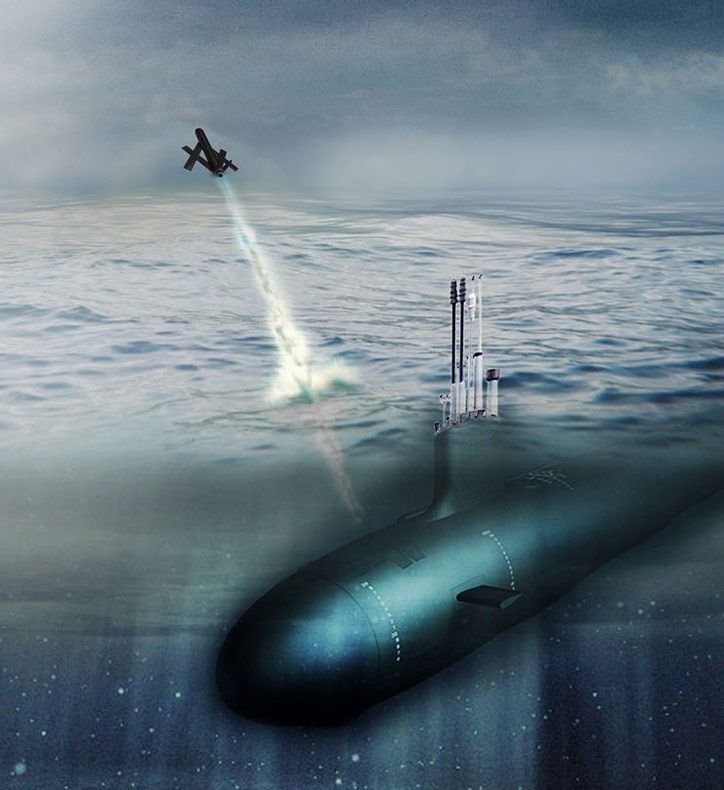
The U.S. Navy plans to deploy unmanned aerial systems (UAS) on board submarines, to provide covert intelligence, surveillance, reconnaissance and target acquisition to support special operations and full-scale warfare, on sub-surface and surface operations. According to the Navy’s plans, attack and guided missile submarine will be equipped with a miniature UAS known as ‘Blackwing,’ produced by Aerovironment Inc. The Navy plans to buy 150 such systems. The company introduced the new unmanned vehicle at the Sea Air Space event in Washington DC.
Typical operation will see the Blacking deployed in the vicinity of targets in contested or denied airspace, where activities of other manned or unmanned platforms would be too risky. From its forward position, the Blackwing will provide target acquisition and battle damage assessment, in support of strikes performed from stand-off range.
Blackwing is believed to be a derivative of Aerovironment’s Switchblade Lethal Miniature Aerial Missile System (LMAMS), redesigned to fit the submarine’s 3” torpedo decoy launcher. It was developed under the Navy’s Advanced Weapons Enhanced by Submarine UAS against Mobile targets (AWESUM) Joint Capability Technology Demonstration (JCTD) launched in 2013. During the demonstration phase (2013-2015) the AWESUM “demonstrates submarine launch, data sharing and control across naval, special operations and air-force units,” the Navy announcement. This JCTD ended in September 2015 with a strong recommendation to transition the capability into the fleet.
[nonmember]Subscribe to read further analysis of this new capability.[nonmember]
[ismember]Despite its small diameter and size, Blackwing has over 60 minutes endurance (far more than the Switchblade’s 10 minutes). The submarine can provide the launch platform, with the drone flying an autonomous, preplanned mission pre-loaded in the submarine, relying on Selective Availability Anti-spoofing Module (SASSM) GPS. The drone uses AeroVironment’s miniature EO/IR payload and secure Digital Data Link (DDL) to transmit imagery to the submarine or share its imagery with other clients, using ‘Link-16 over IP’ (JREAP-C) protocol. Since this distribution relies on the submarine’s uplink, several Blacking drones can be launched simultaneously to ‘daisy-chain’ a link over a wide area or long range. The drone can receive mission updates even when the submarine is submerged, using the mast-mounted antennae to support two-way communications.
Similar to the Switchblade, Blackwing will also have a weaponized version, providing submarines with covert, defensive measure against potential threats in hostile littoral environment.[/ismember]
The Navy also plans to evolve the submarine-launched drone concept with larger vehicles, launched through 21” torpedo tubes. In 2013, the Navy Research Lab (NRL) demonstrated a submerged launch of the Sea Robin UAV, from a modified Tomahawk cruise missile canister.
According to Aerovironment, The Blackwing drone is not limited to a submarine platform, and can also be integrated with and deployed from a variety of surface vessels and mobile ground vehicles to provide rapid response reconnaissance capabilities.















